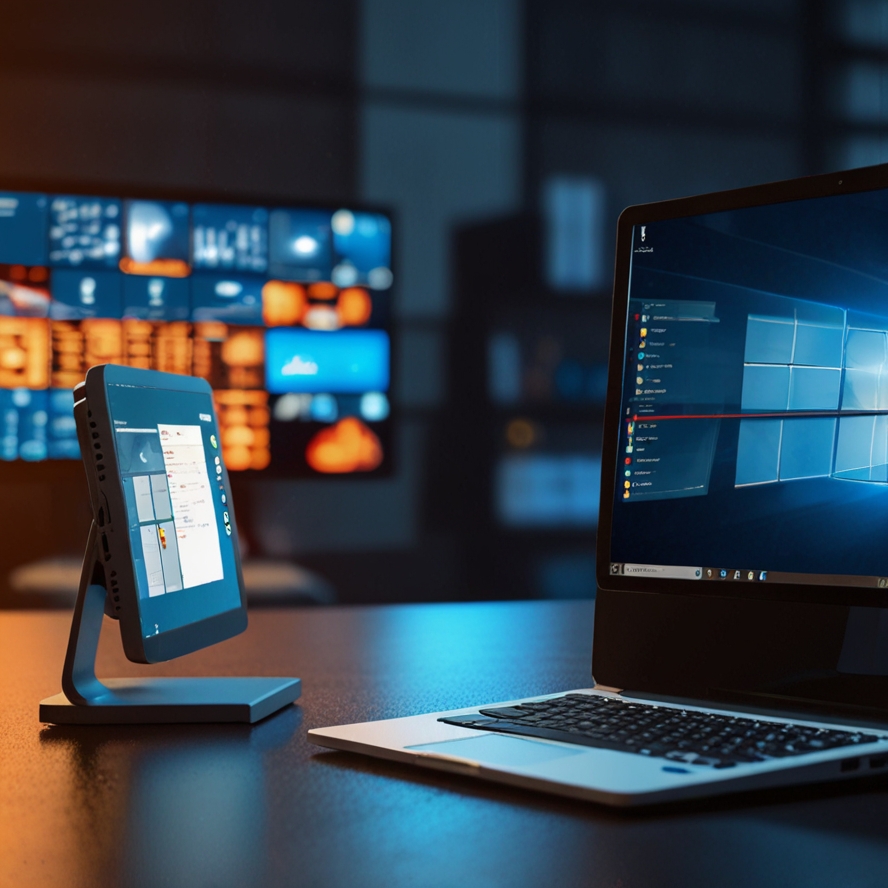In today’s interconnected world, the ability to access and control a computer or network remotely has revolutionized the way businesses operate and individuals work. Remote desktop access, once a niche technology, has evolved significantly over the decades, transforming from rudimentary beginnings to sophisticated, instant solutions that empower users worldwide.
Early Innovations: Pioneering Remote Access
The concept of remote desktop access dates back to the 1960s and 1970s when early computer networks allowed users to log into mainframe computers from remote terminals. These systems relied on basic command-line interfaces and were primarily used for academic and research purposes.
Icon: Old Computer Terminal
Advancements in the 1980s and 1990s
The 1980s marked a significant milestone with the advent of dial-up networking. Technologies like Telnet and Remote Access Service (RAS) enabled users to connect to computers over telephone lines, albeit at slower speeds and with limited functionality compared to today’s standards.
Icon: Dial-Up Modem
By the 1990s, graphical user interfaces (GUIs) began to replace text-based interfaces, making remote access more intuitive and user-friendly. Remote Desktop Protocol (RDP) emerged as a standard for Microsoft Windows systems, allowing users to access desktop environments and applications remotely.
Icon: Windows Logo
Rise of the Internet and Broadband
The proliferation of the internet in the late 1990s and early 2000s transformed remote desktop access. High-speed broadband connections made remote access faster and more reliable. Virtual Network Computing (VNC) and Secure Shell (SSH) protocols expanded the capabilities of remote access beyond proprietary systems, enabling cross-platform connectivity.
Icon: Globe with Network Connections
Cloud Computing and Mobile Revolution
The 2010s witnessed the rise of cloud computing and mobile devices, further advancing remote desktop access. Cloud-based solutions such as Amazon Web Services (AWS), Microsoft Azure, and Google Cloud Platform offered scalable and secure remote desktop services accessible from anywhere with an internet connection.
Icon: Cloud Computing Symbol
Mobile apps and responsive web interfaces made it possible to access remote desktops from smartphones and tablets, empowering users to work and collaborate on the go.
Icon: Smartphone and Tablet
Today’s Instant Solutions
In the present day, remote desktop access has evolved into instant, seamless solutions that integrate with modern workflows. Technologies like Virtual Desktop Infrastructure (VDI) and Desktop-as-a-Service (DaaS) provide scalable virtual desktop environments accessible from any device, eliminating the need for on-premises infrastructure.
Icon: Virtual Desktop
Secure authentication methods, including multi-factor authentication (MFA) and encryption standards, ensure data protection and compliance with regulatory requirements.
Icon: Lock and Key
Benefits and Applications
The evolution of remote desktop access has revolutionized various industries and use cases:
- Business Continuity: Enables employees to work remotely during crises or disruptions.
- Collaboration: Facilitates real-time collaboration among global teams.
- Education: Supports remote learning and virtual classrooms.
- IT Support: Allows IT professionals to troubleshoot and maintain systems remotely.
Icon: Team Collaboration
Future Trends
Looking ahead, the future of remote desktop access will likely focus on:
- Enhanced Security: Continued emphasis on cybersecurity measures to protect remote connections.
- Artificial Intelligence: Integration of AI for predictive maintenance and user support.
- Augmented Reality: Potential applications in remote assistance and training.
Icon: Future Technology
Conclusion
From its humble beginnings as a tool for accessing mainframe computers to today’s sophisticated, cloud-based solutions, remote desktop access has evolved into a cornerstone of modern computing. As technology continues to advance, so too will the capabilities and applications of remote desktop access, shaping the future of work, collaboration, and connectivity in the digital age.
Icon: Digital Transformation
Explore more about remote desktop solutions and how they can benefit your organization at cloudgaminghub. Whether you’re a business looking to enhance productivity or an individual seeking flexibility in your work setup, remote desktop access offers unparalleled convenience and efficiency in today’s fast-paced world.
Icon: Arrow pointing to Learn More
Embrace the evolution of remote desktop access and unlock new possibilities for your digital journey.

No responses yet